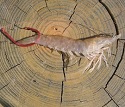 If there is one thing I have learned about fishing over the past fifty plus years as an angler and guide is we all seem to have particular ways we do everything from casting our line to baiting our hooks. The way these technique nuisances are utilized will quite often be the little things that help make one angler more successful than the other.
If there is one thing I have learned about fishing over the past fifty plus years as an angler and guide is we all seem to have particular ways we do everything from casting our line to baiting our hooks. The way these technique nuisances are utilized will quite often be the little things that help make one angler more successful than the other.
One of the questions we receive more frequently during the Anglers for Conservation Fishing Workshops we conduct each winter and spring is, “How do you properly hook a shrimp?”
To answer, we start by telling the students that there are as many ways to hook a shrimp as there are ways to cook a shrimp! This usually provokes a chuckle or two, and the shaking of heads in agreement. This humor also helps lubricate their minds; this helps them to also consider the many options they have to approach this fishing fundamental.

For nearly twenty years, I procured shrimp at Satellite Beach’s Shamrock Bait & Tackle for my fishing charters on the Indian River Lagoon. The owner and a mentor of mine, Ed Havrilla, sworn that you needed a lively shrimp to catch gator-size seatrout. For years, Ed and his knowledgable staff actually handed out hundreds of free Gator Trout buttons to anglers who caught spotted seatrout weighting over seven pounds from the surrounding lagoons; on the button they would print the size of your catch.
Ed taught his clients how to slip the point of the hook directly under the shrimp’s front horn and above its eyes at the front of its head. He would tell them to be careful not to hook the shrimp in the brain (a dark spot near the base of the horn) or “It will kill them… dead.”
Ed’s technique worked, but the shrimp often came unhooked and flew off whenever my clients tried making that extra long cast. Plus about half the time when I was in a hurry to “bait-up” I would miss the target and hit too close to the brain. killing the shrimp.
By watching other guides hook shrimp and experimenting with several other techniques myself, over time, I found it was much easier to hook the shrimp from underneath its body into the last segment of its shell directly above the shrimp’s tail. This technique proved to be more secure (the shrimp rarely flew off the hook); easier to do in a rush; and also the shrimp stayed alive longer and casted better than when we hooked them at the base of their head’s front horn. Read More Link – http://rodneysmithmedia.com/properly-hooking-a-shrimp/
